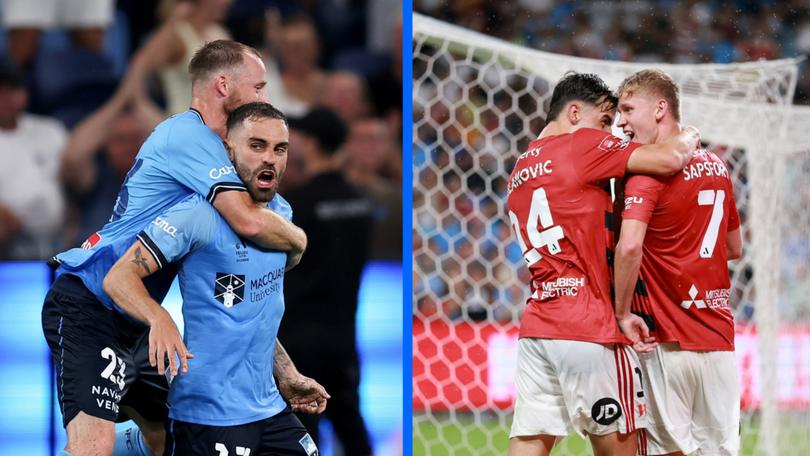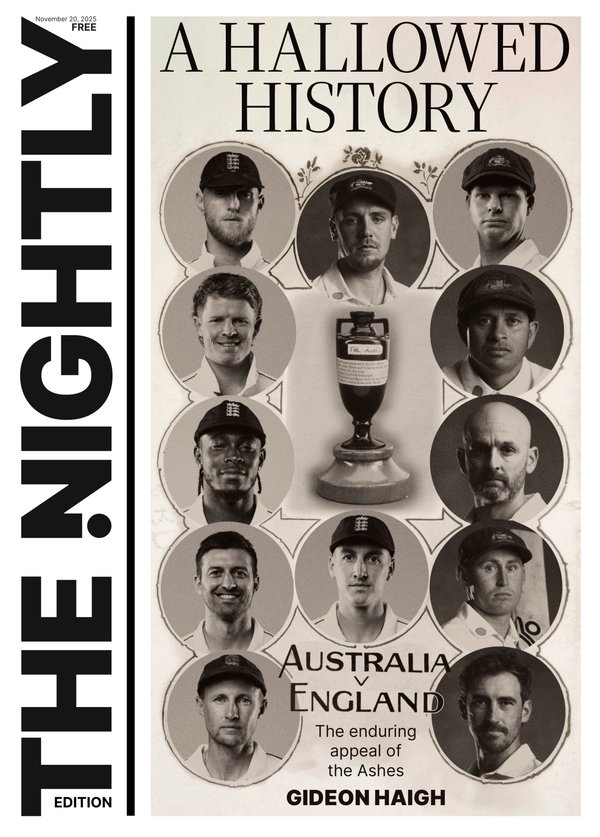Exhilarating derby proves yet again why the Sydney Derby is the crown jewel of the A-League

An awful lot has changed in the 13 years since the first Sydney Derby was played in 2012.
Nestory Irankunda was six-years-old, nobody had uttered the words “Western United”, and Brisbane Roar were the benchmark for the A-League.
Perhaps most starkly, the image of the Sydney Derby and its place in Australian sport’s landscape has been constantly fluctuating.
Sign up to The Nightly's newsletters.
Get the first look at the digital newspaper, curated daily stories and breaking headlines delivered to your inbox.
By continuing you agree to our Terms and Privacy Policy.The first three to four years of the derby came in what many refer to as the “golden age” for the A-League.
Back when Fox Sports held the rights, Matchday Saturday led into Premier League coverage, Alessandro Del Piero and Shinji Ono were balling out for the two big Sydney clubs, and attendances were consistent and strong across the league.
The Sydney Derby was the spectacle of the A-League in its first five years. Consistent sell-outs at the cauldron-like Parramatta Stadium and grand final-esque feeling crowds and atmospheres in the Sydney Football Stadium.
Like an awful lot of things in Australian football, it hit a snag in the latter parts of the 2010s, in no small doubt due to the displacement of both sides and the loss of their true home grounds.
While 60,000 people at Stadium Australia was astonishing, it did not have the same atmosphere or feel as a packed-out Parramatta or 45,000-strong Sydney Football Stadium.
Then came the pandemic and massive changes in how people could and chose to attend sport.
This led to some apathy in the stands, and unfortunately, some apathy on the pitch.
But something fantastic has happened to the derby again in the last three years, exemplified by last Saturday’s exhilarating 3-3 draw at Moore Park courtesy of a Anthony Caceres’ 97th minute equaliser.
It feels alive again.
It has returned to its best. It has surpassed its own folklore. It is most definitely the league’s crown jewel – yet again.
Both teams finally returning to their spiritual homes has played a sizeable part. The grounds, and the parochialism of being on your own home turf, is so important to this fixture as it is any derby.
Playing the derby at somewhere like the Sydney Cricket Ground, Stadium Australia, or Jubilee Oval is like watching Dune or Oppenheimer on an airplane screen. It gives you a basic idea and you can enjoy it enough, but you aren’t getting the real, authentic way it was designed to be experienced. A derby without fixed home grounds isn’t what a derby is about for fans or players.
With the return to their rightful homes, there’s also been an uptick in something the derby has been sorely missing for years: Players leaning into the Machiavellian arts.
Brandon Borrello, Robert Mak, Zachary Sapsford, Patryk Klimala, Kusini Yengi, Andrew Redmayne, Rhyan Grant, Nicolas Milanovic.
They all know the task at hand. Milos Ninkovic’s cross-city switch has definitely helped this, even if he now feels more like a footnote in the derby’s resurgence.
The players are finally latching onto the art of s...thousery again. Embracing their roles as villains and heroes in the fixture, and revving up fans in a way the fixture had been lacking for quite some time in the COVID years.
Be it Kusini Yengi’s shirt-off celebration in front of The Cove in 2022 or Patryk Klimala jumping the fence in front of the Red and Black Bloc last Sunday, it finally feels as though the players “get it” again. That enthusiasm feeds back into the stands.
Douglas Costa revving up the home crowd for those last 10 minutes as the Sky Blues chased an equaliser saw the authentic and all-encompassing, sense-stimulating, spine-tingling atmosphere only football can give you, and something football in Australia does so much better than rival codes.
Nothing has the atmosphere, the drama, or the raw emotion like the Sydney Derby.
In the stands, the intensity has returned to where it once was. The travel to and from the game feels so much more exciting and feels tapped into the atmosphere of the game once you get into the stadium.
It’s not just 90 minutes of football, it’s back to this full-day of excitement again - amazing considering how often the derby is played - this is the third one this season.
An awful lot of things go wrong in Australian football, and in particular the A-Leagues.
It’s a league that survives without the media attention of its larger, rival sporting codes, but shows consistently its own hardcore fanbase can and will keep it going.
